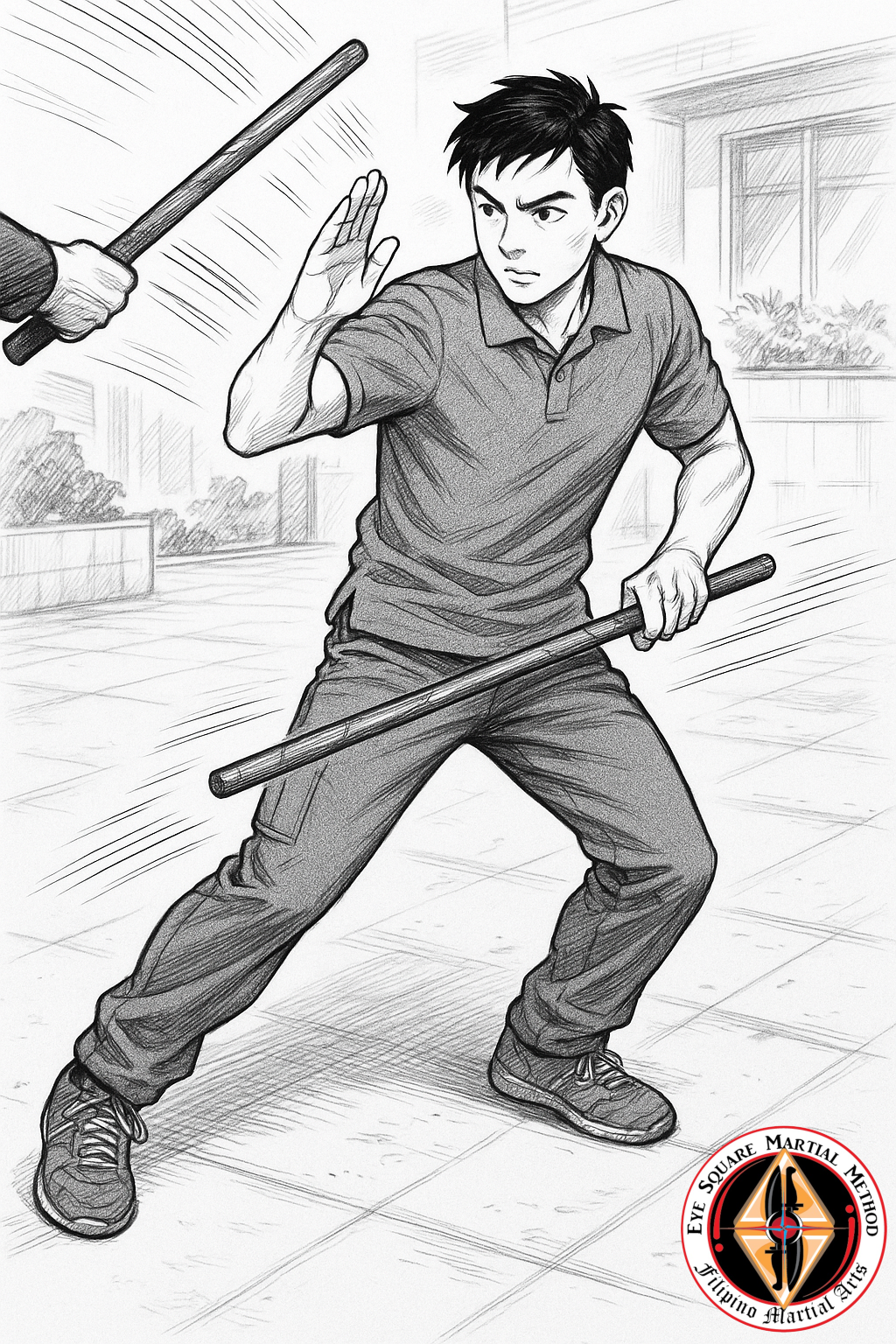Part I of the Eye Square Footwork Series
“Most people only move forward and back. If you can’t move off the line, you’re just a target with good intentions.”
The Problem: Flat-Footed Fighters
Under pressure, most students default to simple forward-and-back motion—just like walking.
Sure, people talk about lateral movement and pivots…
But very few actually train them to the point where they show up under stress.
So Let’s Break That Pattern.
- What are the other ways to move?
- How do you train them?
- Most importantly—how do you make them instinctive?
Footwork Basics
“Start with the step. Then make it smarter.”
The building blocks of all movement start here:
- Step-Drag – Advance while maintaining stance integrity.
- Drag-Step – Retreat without crossing or twisting your base.
- Push-Drag – Explosive motion forward or back.
- Crossover / Cross-Behind – Move laterally with a tight profile.
Weight Distribution
“Balance is not stillness—it’s readiness.”
When stepping, heel strikes are natural… but wrong.
To stay mobile:
- Lead foot: 60% weight on the ball of your foot
- Rear foot: 90% on the ball, heel elevated
- Keep your stance just slightly wider than shoulder-width
📸 [Image suggestion: Foot diagram showing ideal weight distribution and heel elevation]
Angle Stepping
This is how you stop being a target.
Angle stepping lets you:
- Move off the line of attack
- Create or close distance
- Set up your next strike, block, or counter
“In Kamatuuran, angle stepping is baked into Cinco and Doce Teros from day one.”
📸 [Image suggestion: Overhead diagram of angle step entry and exit]
Whole-Body Movement
“Your legs move you. Your torso makes you dangerous.”
Don’t just step—rotate.
Your spine is your axis. Use it.
Train your body to:
- Rotate through attacks
- Torque during blocks
- Align your center with your intent
Also: Keep your off-hand alive.
- Single stick: Chest-high checking hand
- Double stick: Active stick or chambered off-hand
Footwork Patterns
Patterns teach flow, positioning, and recovery.
Key drills:
- Triangle: Close → Lateral → Retreat
- Reverse Triangle: Retreat → Lateral → Close
- X Pattern: Range fluidly from Cuarto to Largo Mano
- Hourglass: Merge triangle, reverse, and X
- Diamond: “What if” flow when opponent creates space
Pivoting
Sometimes, you don’t need to move—just face a different way.
Practice:
- Triangles with 90° pivots on step 2 or 3
- Four pivots in a row
- 180° turns under control
- Free-flow between angles and directions
“Pivoting lets you change context without changing location.”
The Paradox of Patterns
Drills and patterns are scaffolding.
They help you build instinct—but they’re not the goal.
“The real goal is to move when you need to, how you need to—without having to think about it.”
Coming Up Next:
Part II – How to Build Instinctive Movement (Without Thinking About It)
We’ll dive into how to take all of this and make it automatic under pressure.


Leave a Reply